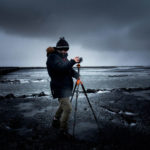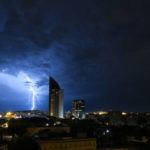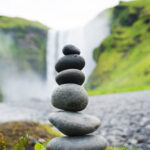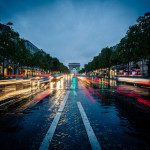We’ve all heard of “bokeh,” though many of us are still insecure about how to pronounce the word (see the correct pronunciation here). We fawn over great bokeh in our favorite images, drool over lenses that produce beautiful, smooth bokeh, and scorn lenses that produce “bad” bokeh. However, even the best bokeh doesn’t guarantee an image’s success—that largely depends on the photo’s composition and other related technical factors.
Using his trusty Leica M9 Digital Rangefinder camera, Kai breaks down the concept of bokeh in this video and provides advice about how to effectively compose those blurred elements to create stunning photographs:
What is bokeh?
Widely known as “bokeh” in the photographic sphere, “boke” is the Japanese word for “blur.” Bokeh refers to the out-of-focus area in an image that contains soft focus, such as a portrait or a macro shot—in layman’s terms, we’re talking about the background. When lights are photographed behind the subject, the resulting bokeh appears as colorful circles, ovals, or pentagons, depending on the quality of the lens being used.

Bokehlicious.
As a general rule, the human brain tends to appreciate the circular or oval-shaped bokeh spots provided by higher-quality equipment more than the pentagons you’ll get with lower-end gear. However, Kai’s humorous advice is that you don’t need to spend a fortune to get great bokeh.
“You don’t need the most expensive lens,” he says, “just something that doesn’t have poo-inducingly bad bokeh.”
How to use bokeh
1. Lead the eye gradually into the “bokeh abyss.” Bokeh is best used when it gives an image a sense of depth, as in the image below where the focus gradually drops off into the cityscape.

In this image, the lines to either side of the subject aesthetically lead the eye into the background.
2. Use Live View to examine bokeh before shooting. Though it does sap battery power, Live View will likely provide a better picture of what bokeh will look like at your current camera settings when compared with the bokeh rendering of your camera’s standard viewfinder.
“If you really need to know exactly what you’re going to get, use Live View or get used to interpreting what you see and knowing how that translates into the final image,” Kai says.
3. Look at the background in focus before shooting. The human eye naturally moves to the sharpest elements of an image, so if you only look at the background when it is out of focus in your viewfinder, it is easy to overlook proper background composition. This is why photographers often kick themselves after photo shoots for not noticing telephone poles and tree branches polluting their images. Make sure to examine the background closely before beginning to shoot.
4. Avoid distracting backgrounds. Senseless clutter, lines, and non-complementary colors in the background do not make for strong images. Don’t think that just because background elements are blurred that they will not affect the image. Instead, make sure that the blurred shapes and colors add to your photograph or find some other area or angle from which to shoot it.
“Bokeh isn’t some magic spell that makes backgrounds better,” Kai says. “A cluttered background is still a cluttered background when it’s blurred.”

Angled differently, this image would not benefit from leading lines.
5. Don’t choose backgrounds that are more attractive than the subject. While interesting backgrounds are a must, your background should serve to enhance the subject, not distract the viewer from looking at it.
“You can still have interesting backgrounds, but it’s all about the right balance,” says Kai. “To get a bokehlicious photo is not just as simple as choosing f/1.4. One has to appreciate the relationship of the background to the subject and also how something may look even when it’s thrown completely out of focus.”
Like This Article?
Don't Miss The Next One!
Join over 100,000 photographers of all experience levels who receive our free photography tips and articles to stay current:






Isn’t this article just Kai’s DigitalRev youtube video transcribed?